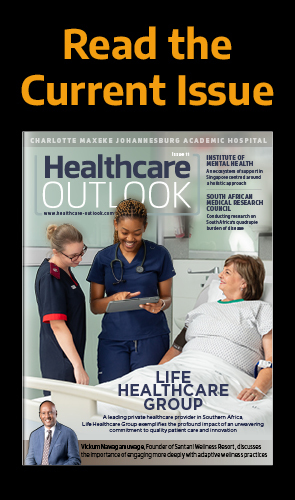INTRODUCTION
On February 27th, 2020, the first case of coronavirus was recorded in New Zealand. By March 25th it had imposed a strict lockdown. Fast forward four months and New Zealand is being held up as a shining example for its success in beating the virus – it hasn’t had a locally acquired case since May 22nd.
Meanwhile, Prime Minister Jacinda Ardern’s approval rating is at an all time high of 62 percent. What has made her government’s coronavirus response strategy so effective?
ACTING EARLY
New Zealand’s government implemented its lockdown when the country only had 205 COVID-19 cases and no deaths. Compared to other countries, this was remarkably early – the UK, for example, went into full lockdown when there were more than 6,500 cases and over 330 deaths. Acting this early was not New Zealand’s initial plan; like many other countries it planned to slowly tighten measures as the virus took hold. But Michael Baker, a public health expert on the government’s COVID-19 advisory panel, believed this was the wrong approach.
“I thought we should do it in the reverse order and throw everything at the pandemic at the start,” he told New Scientist magazine.
Baker was inspired by the World Health Organization’s report from China, which reported on the effective containment of the virus through stringent lockdown measures. He believed that acting early and aggressively would stop the spread of the virus, even wipe it out entirely. Although other experts on the panel had contrary suggestions, the government followed Baker’s advice.
“We’re going hard and we’re going early,” Ardern told the public. “We only have 102 cases, but so did Italy once.”
The government established a four-level alert system for lockdown. Level four lockdown, initiated on March 25th, saw the cancellation of all sports matches and the closure of non-essential services, including pools and playgrounds. People were ordered to remain at home unless it was necessary to head out.
On April 28th, the country moved down to level three alert (including easing of work restrictions, reopening of early years childcare), and reached level two alert on May 13th, which allowed socially distanced gatherings of up to 10 people. On June 8th, following two weeks with no new cases, the country lifted all restrictions. At the time of writing, there have only been 22 deaths related to coronavirus in the country, testament to a successful strategy.
But even so, Ardern cautioned the country against celebrating too soon, warning that cases may reoccur.
“Elimination is not a point in time, it is a sustained effort,” she said. Indeed, in the past 24 hours, New Zealand has two new confirmed cases, both visitors from abroad, staying in official managed isolation and quarantine facilities.
CLEAR, CONSISTENT, EMPATHETIC MESSAGING
Another reason New Zealand is receiving worldwide praise is thanks to its clear communication with local inhabitants.
“Jacinda is a brilliant communicator and an empathetic leader. But what she’s said also made sense and I think people really trusted that. There’s been a high level of compliance,” Baker told the BBC.
Ardern has been holding daily press conferences accompanied by Ashley Bloomfield, Director-General of Health, whose clear messaging has also been praised.
“From the outset he has carefully and calmly communicated many complex health issues around COVID-19 paving the way for government decisions,” explains Sarah Robson, a journalist at Radio New Zealand.
The four-level alert system has given the public clear guidance on how to behave during the lockdown, which has resulted in a high degree of compliance. Furthermore, non-compliance has not been tolerated. Health Minister David Clark was demoted after breaking lockdown rules to take his family to the beach. He later resigned after coming under fire for the mismanagement of isolation facilities.
Ensuring senior government officials are accountable for their actions sends a clear message to the public. This was not the case in the UK, when senior advisor Dominic Cummings was defended by the Prime Minister after allegedly breaking the lockdown rules on multiple occasions, which sparked public outrage. Research conducted by the Institute of Applied Economics and Social Value showed that the number of people breaking lockdown rules almost doubled during the week that the Cummings story broke, while data gathered from Apple Maps shows an increase in mobility.
As well as being consistent, Ardern is also being internationally praised for her empathy. Rather than drawing on the popular political rhetoric of waging war against the virus, the New Zealand government urged the population to unite to overcome it. Ardern has repeatedly referred to New Zealand as “our team of five million”, signing off public appearances with the slogan “Be strong. Be kind.”. She even announced that she and her senior ministers would take a 20 percent pay cut for the next six months – a way of showing she acknowledges the financial difficulties faced by New Zealanders.
ECONOMIC RECOVERY
New Zealand’s early complete lockdown meant that the brunt of the economic costs of the virus were borne early. The government moved quickly to deploy a series of economic measures.
In its 40 page report, Rebuild New Zealand 2020, PwC praised the government’s agility in its unprecedented scale of spending and agility in quickly implementing new policies. However, it suggested that there would still be economic difficulties, predicting a decline in GDP of between seven and eight percent and an increase in unemployment, peaking at 9.8 percent in September 2020. It also anticipates a rise in Crown debt from $58.66 billion in 2020 to $124.5 billion in 2020.
Like the rest of the world, then, New Zealand faces a long road to economic recovery. But the report by PwC suggests that there are reasons to be optimistic. The largest economic sector, agriculture, continues to perform well, whilst a recent investment in ultra-fast broadband will allow many workforces to upskill and participate in global opportunities.
HSBC’s Australia and New Zealand chief economist, Paul Bloxham, anticipates that New Zealand will recover more quickly than Australia.
“For New Zealand, a higher economic cost was borne upfront, with the full lockdown,” he explains. “However, local elimination has put the economy on track for a ‘V-shaped’ bounce back. We are pencilling in a 12.6 percent quarter-on-quarter rise in GDP in the third quarter.”
Despite the happiness at lockdown lifting, New Zealand has a long journey to recovery. But with Ardern at the helm, the country has every chance of bouncing back.


























